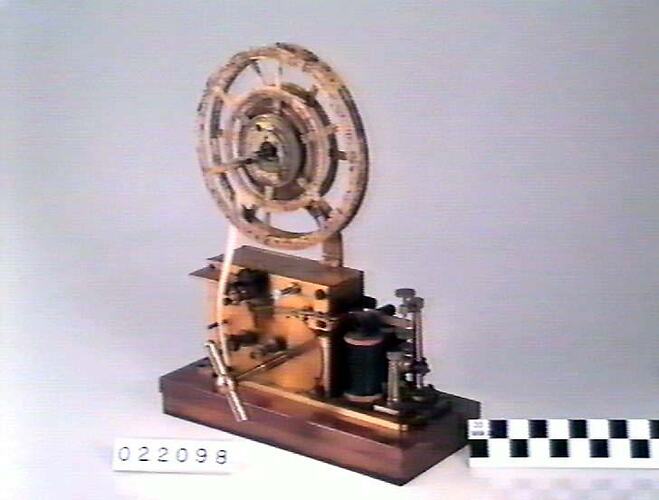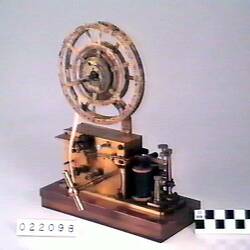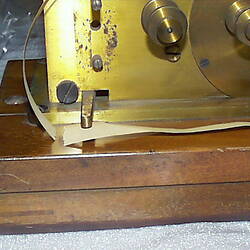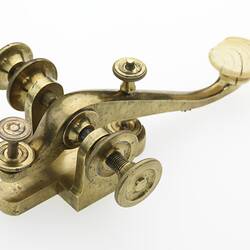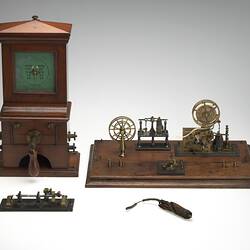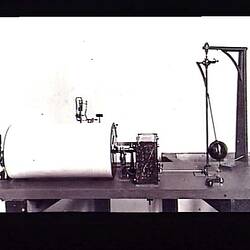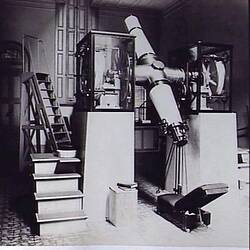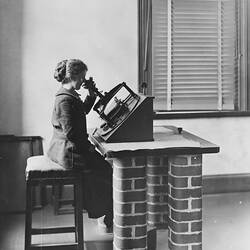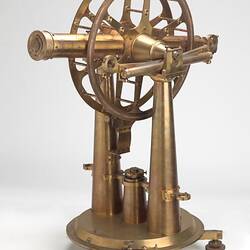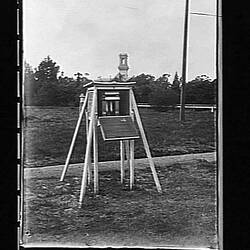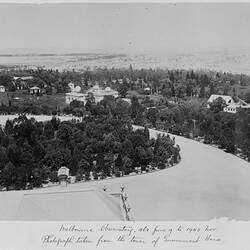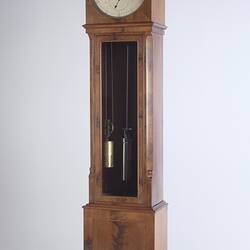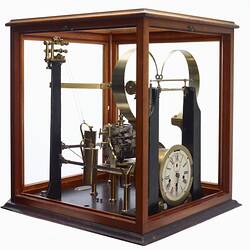Summary
Telegraph inking register for receiving and recording telegraph signals.
In operation, the intermittent current generated by the received signals causes a small rotating wheel to be intermittently pressed on to a moving paper tape. The wheel is partially immersed in a small container of ink. The rotating wheel carries the ink to the paper and produces a series of long and short marks on the tape, with the length of each mark depending on whether the duration of the current flow is long (producing a dash) or short (producing a dot.)
The register carries the marks of the Victorian Telegraphic Service, which operated the telegraph system in Victoria from 1856 to 1869. It was used at Melbourne Observatory.
Physical Description
Object consists of a metal base at one end of which are two vertical wire coils forming electromagnets which are energised by the electrical signal received over the telegraph line. The rest of the base is occupied by a brass case housing the mechanism by which paper tape is moved past a small wheel at the end of a pivoted arm which moves in response to the electromagnets. The wheel is partially immersed in ink held in a small rectangular container, so that when the wheel is in contact with the tape, ink is carried on to the tape as the wheel rotates. The tape is supplied from a reel mounted above the register on a metal arm. The mechanism to move the tape is powered by a spring within the brass case which can be wound up using a key on a central square shaft.
More Information
-
Collection Names
-
Collecting Areas
-
Acquisition Information
Transfer from Melbourne Observatory, 1945
-
User
Victorian Telegraphic Service, Melbourne, Greater Melbourne, Victoria, Australia, circa 1860s
-
User
Melbourne Observatory, South Yarra, Greater Melbourne, Victoria, Australia, circa 1860s-1900s
-
Inscriptions
Marked in two places on brass baseplate and once on the wooden mount: a crown over "V.T.S." within a circle and numbered "401". Wooden base, stamped: RESISTANE / OH.MS / 6'
-
Classification
-
Category
-
Discipline
-
Type of item
-
Overall Dimensions
240 mm (Length), 340 mm (Width), 440 mm (Height), 9 kg (Weight)
-
Exhibition Collection Management
240 mm (Length), 335 mm (Width), 440 mm (Height), 9 (Weight)
-
Dimensions
224 mm (Length), 332 mm (Width), 432 mm (Height)
Measurement From Conservation. Measuring Method: Maximum dimensions
-
Keywords
